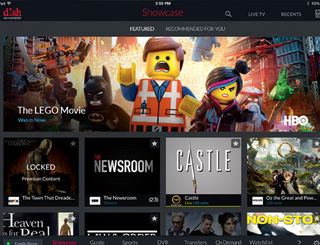Shape-Shifting Hits Mobile Video Strategies

With Web and app developers increasingly embracing the mantra of “mobile first,” TV executives at CES will be keeping a close watch on new developments in the mobile device world. For most websites, mobile traffic now exceeds that from PCs. “Online [usage] continues to grow, but mobile is growing much faster and the shift from PCs to mobile and phone screens is accelerating,” says Jimshade Chaudhari, director of product management at Dish. ”The screens are simply better and the networks are faster.”
These usage trends are already impacting Web development, with a number of programmers using responsive design techniques to revamp their websites.
David Wertheimer, president of digital at Fox Broadcasting Company notes that they recently relaunched Fox.com with a design that is simpler and less cluttered so it will work better on smart screens. “One of the features of the new site is that it is responsive,” he says. “It will adjust to the browser or platform and give you a very clean look even on a mobile phone.”
Two other major developments networks will be watching are the growing popularity of larger-screen smartphones—a.k.a., phablets—and trends in tablet sales, which seem to indicate that sales are slowing, particularly on the higher end.
The research firm IDC reports that total tablet sales grew by 11% worldwide in the third quarter of 2014 to 53.8 million. But sales of Apple’s iPad slipped from 14.1 million to 12.3 million and much of the sales growth came from new, very inexpensive android tablet makers such as RCA, which saw its sales nearly triple from 0.9 million to 2.6 million.
Similar news comes from Gartner, which is predicting that tablet sales will only be up 11% this year to 229 million worldwide, way down from the 55% jump in sales seen in 2013, when 207 million were sold.
Broadcasting & Cable Newsletter
The smarter way to stay on top of broadcasting and cable industry. Sign up below
Eyeing New Screens
At the same time, developers face a larger range of screen sizes, from new smart watches tethered to smartphones up through larger phablets, small seven-inch tablets and oversized tablets that can measure up to 12 or 13 inches and are designed to be laptop replacements.
“You now have every size of screen from four inches to 13 inches,” says Marc DeBevoise, executive VP/GM of entertainment, sports and news at CBS Interactive. “Mobile is a very big driver of traffic. But with the larger screens we are seeing a spike in video usage on the phone side that is larger than the increases in video usage on tablets.”
“We are still seeing a ton of consumption on tablets,” adds Alex Wellen, chief product officer, CNN. “But we are starting to reach a tipping point where the form factor of these larger phones, first for Android and now for iOS, is calling into question the tablet and the role they will play in the future….It isn’t surprising that we are seeing a lot of growth either on a handheld device or on the 10-foot device [the TV set] that is across the room.”
Ryan Spoon, senior VP of digital product development at ESPN agrees. “With screens getting larger on smartphones there is not a lot of difference between the larger phones and the smaller tablets, which has some interesting implications for the way we deliver content,” he says.
Spoon notes that viewing quality of all streaming video is also improving and that these mobile devices are important platforms for driving users to tune into games. In November, he says ESPN sent “several billion alerts with video clips showing [teams] scoring.”
Such mobile efforts are heavily integrated with social media to boost engagement. “Social media integration with fantasy football has been a real success,” he says, adding that, “In September, we had just about 10 billion minutes across all digital properties, with about 1.7 billion from Fantasy Football.”
While phones are still widely used for short-form content, viewing sessions are increasing. “During the World Cup, our users were engaged for 30, 40 minutes at a time watching video,” says Scott Levine, senior VP of production and technology for digital at Univision Communications. “We continue to see good growth on tablet but it is not as explosive as smartphones. Mobile phones accounted for 87% of the traffic during the World Cup, much more than from tablets.”
Tablet TV Goes Local
Rapidly growing video viewing on smartphones doesn’t mean that video consumption on tablets is falling—it is still growing at healthy rates—or that tablets have become a less important platform.
Tablet TV, for example, has partnered with Granite Broadcasting to launch a service that will allow tablet owners to get free broadcasts of local TV channels. In December, the service began accepting pre-orders for an $89.99 T-Pod device that will allow tablets to receive broadcast signals from local stations, which will first launch in San Francisco but will eventually roll out in other markets.
“It gives [viewers] the ability to watch all the major networks and all the subchannels live,” and will provide DVR functionality and eventually [video-on-demand] and catch-up TV features, reports Tablet TV CEO Len Fertig. He cites a survey by Magid Associates released in August that claims 33% of all tablet owners consider themselves likely to use the services.
